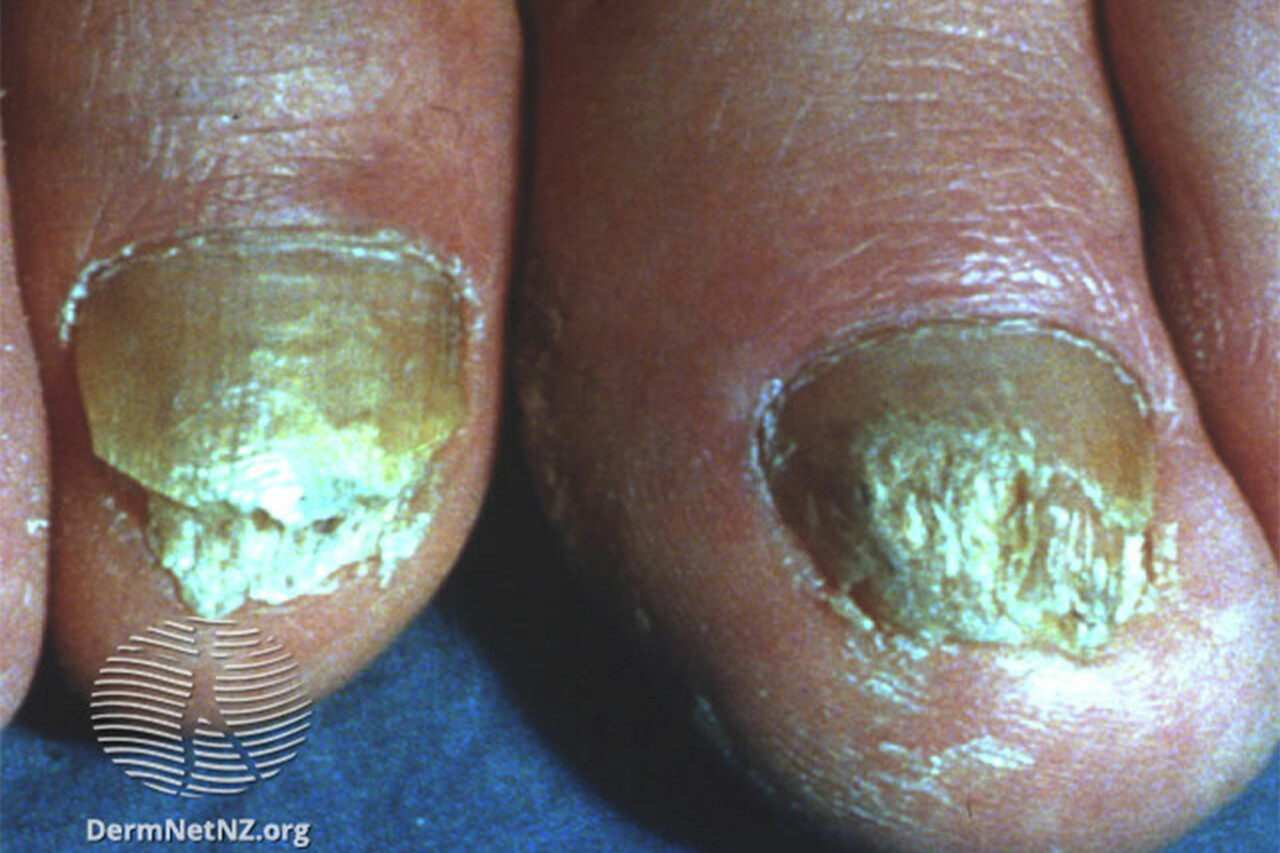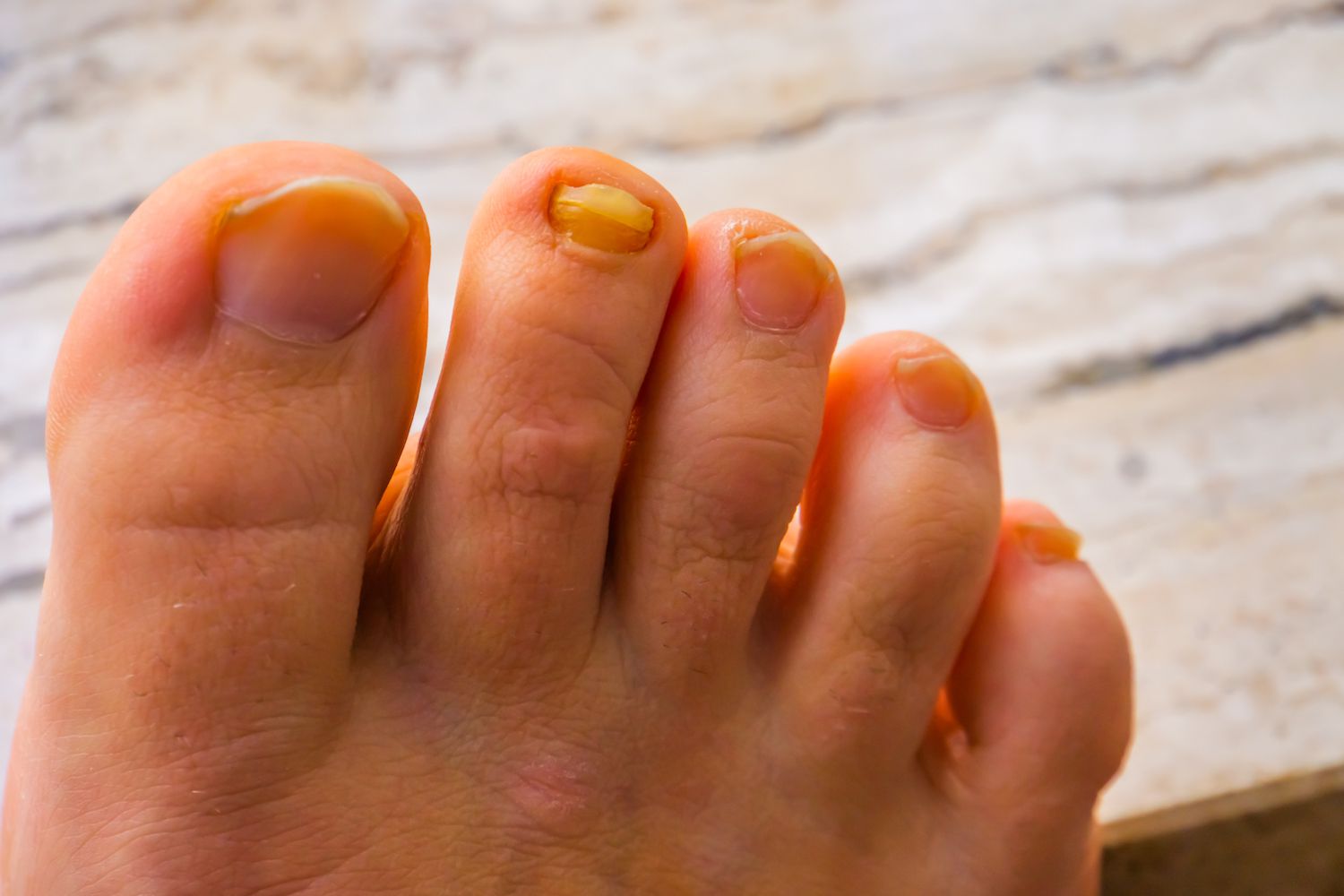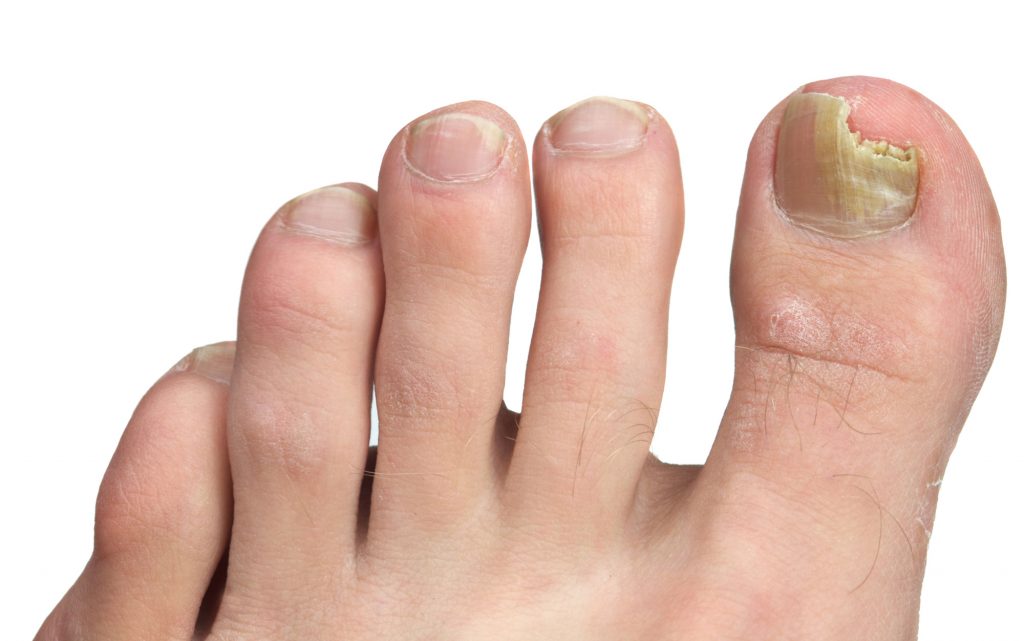Introduction

Yellow toenails can be a cause for concern as they may indicate an underlying issue. While some cases of yellow toenails may be attributed to nail polish or the natural aging process, it is important to monitor your nails for any changes to rule out any potential health issues. One of the common causes of yellow toenails is a fungal infection known as onychomycosis. However, there are other possible causes such as nail psoriasis, yellow nail syndrome, lifestyle factors, and medical conditions. Understanding the reasons behind yellow toenails is crucial for timely diagnosis and appropriate treatment.
Overview Of Discolored Nails And Its Potential Causes
Discolored nails can be a cause for concern, as they may indicate an underlying issue. While yellow toenails are one common type of discoloration, there are other colors that nails can change to, such as white, green, or black. These changes in nail color can be attributed to various factors, including fungal infections, medical conditions, lifestyle choices, and even certain medications. It is important to pay attention to any changes in nail color and consult a healthcare professional for proper diagnosis and treatment.
Importance Of Understanding The Reasons Behind Yellow Toenails
Understanding the reasons behind yellow toenails is important as it can indicate an underlying issue that requires attention and treatment. Yellow toenails can be a sign of fungal infections, nail psoriasis, or even yellow nail syndrome. If left untreated, these conditions can worsen and lead to complications. By understanding the underlying causes, individuals can seek appropriate medical intervention and take steps to prevent further damage or spread of infections. It is crucial to consult a healthcare professional for proper diagnosis and treatment, ensuring the overall health and well-being of the individual.
Fungal Infections

Fungal infections are one of the most common causes of yellow toenails. These infections, known as onychomycosis, can occur when fungi attack the nail. Tight, ill-fitting shoes and socks that do not allow the feet to breathe, as well as excessive sweating, can contribute to the development of these infections. Common symptoms of fungal infections in nails include yellow discoloration, thickening of the nail, and brittleness. It is important to seek treatment for fungal infections to prevent further complications and promote healthy nail growth.
Fungal Infections And Their Relation To Yellow Toenails
Fungal infections, known as onychomycosis, are a common cause of yellow toenails. These infections occur when fungi attack the nail, causing discoloration and thickening. Tight, ill-fitting shoes and socks that don’t allow proper air circulation, as well as excessive sweating, can contribute to the development of fungal infections. If left untreated, the infection can spread and lead to further complications. It is important to seek treatment for fungal infections to prevent the progression of yellow toenails and promote healthy nail growth.
Common Symptoms Of Fungal Infections In Nails
Common symptoms of fungal infections in nails include:
- Yellow discoloration: The nail may turn yellow, brown, or even green in some cases.
- Thickening: The infected nail may become thick and difficult to trim.
- Brittleness: The nail may become brittle and prone to cracking or splitting.
- Deformation: The nail shape may change and become distorted.
- Foul odor: In advanced cases, there may be a foul smell emanating from the infected nail.
- Pain and discomfort: The affected nail bed may become tender and painful.
If you experience any of these symptoms, it is important to seek medical attention for proper diagnosis and treatment.
Nail Psoriasis

Nail psoriasis is a chronic autoimmune condition that affects the nails, causing discoloration, pitting, and changes in their appearance. It is characterized by the rapid reproduction of skin cells, leading to the formation of salmon patches or oil drop spots underneath the nails. These patches can appear yellow, red, pink, or brown in color. Pitting, which is the development of small dents or pits on the surface of the nails, is also commonly observed. While there is no cure for nail psoriasis, treatments are available to alleviate the associated symptoms and manage the condition effectively.
Psoriasis As A Possible Cause Of Yellow Toenails
Psoriasis, a chronic autoimmune condition, can also be a potential cause of yellow toenails. When psoriasis affects the nails, it can lead to discoloration, pitting, and changes in their appearance. The rapid reproduction of skin cells in psoriasis leads to the formation of salmon patches or oil drop spots underneath the nails, which can appear yellow in color. This discoloration is a common symptom of nail psoriasis. Understanding this connection is crucial in diagnosing and treating yellow toenails effectively.
Signs And Symptoms Of Nail Psoriasis
Signs and symptoms of nail psoriasis can vary, but common indications include the discoloration of the skin underneath the nails, known as salmon patches or oil drop spots, which can appear yellow, red, pink, or brown. Other signs may include the development of dents or pits (cupuliform depressions) on the nails, crumbling nails, nails separating from the finger or toe, and the accumulation of buildup beneath the nails. In some cases, there may also be the presence of blood under the nail. If any of these signs are observed, it is important to consult a dermatologist for proper diagnosis and treatment.
Yellow Nail Syndrome

Yellow Nail Syndrome is a rare condition characterized by yellow discoloration of the nails. The exact cause of this syndrome is unknown, but it has been associated with congenital abnormalities of the lymphatic vessels. Typical cases of Yellow Nail Syndrome also have associated symptoms such as lymphedema (swelling of the extremities) and respiratory disturbances. The nail abnormalities in Yellow Nail Syndrome can improve with treatment of the underlying respiratory disorders. In some cases, Yellow Nail Syndrome has been linked to malignancies and immunodeficiencies. Seeking medical attention is essential for proper diagnosis and management of this condition.
Understanding Yellow Nail Syndrome And Its Impact On Nail Color
Yellow Nail Syndrome is a rare condition that can cause yellow discoloration of the nails. This discoloration occurs due to various factors, such as lymphatic abnormalities and impaired circulation in the nail bed. The yellow color is often accompanied by slow nail growth and brittleness. It is important to note that yellow nail syndrome does not solely affect the nails; it can also affect other parts of the body, such as the respiratory system and lymphatic vessels. Therefore, understanding the impact of yellow nail syndrome on nail color can help in the diagnosis and management of this condition.
Other Symptoms Associated With Yellow Nail Syndrome
In addition to yellow discoloration of the nails, yellow nail syndrome can also manifest through various other symptoms. These may include:
- Lymphedema: Swelling in the arms or legs due to lymphatic system dysfunction.
- Respiratory abnormalities: Difficulty breathing, chronic cough, and recurrent chest infections.
- Pleural effusion: Accumulation of fluid in the pleural cavity, causing shortness of breath and chest pain.
- Edema: Swelling in the hands, feet, and ankles.
- Thickened, ridged, or brittle nails.
- Nail plate separation from the underlying nail bed.
These symptoms, along with the characteristic yellow nails, can help healthcare professionals in diagnosing yellow nail syndrome.
Lifestyle Factors

Certain lifestyle factors can contribute to the development of yellow toenails. Excessive smoking may cause nicotine stains, resulting in yellow discoloration of the nails. Additionally, poor hygiene practices and failure to regularly clean and trim the nails can lead to the accumulation of dirt and debris, which can cause nail discoloration. Wearing tight-fitting shoes or using harsh chemicals on the nails may also contribute to yellowing. To prevent yellow toenails, it is essential to maintain good nail hygiene, avoid smoking, and wear proper-fitting footwear.
Influence Of Lifestyle Choices On Nail Discoloration
Certain lifestyle factors can contribute to the development of yellow toenails. Excessive smoking may cause nicotine stains, resulting in yellow discoloration of the nails. Additionally, poor hygiene practices and failure to regularly clean and trim the nails can lead to the accumulation of dirt and debris, which can cause nail discoloration. Wearing tight-fitting shoes or using harsh chemicals on the nails may also contribute to yellowing. To prevent yellow toenails, it is essential to maintain good nail hygiene, avoid smoking, and wear proper-fitting footwear.
Habits And Behaviors That Can Lead To Yellow Toenails
Poor hygiene practices and neglecting to clean and trim the nails regularly can contribute to the development of yellow toenails. Accumulation of dirt, debris, and sweat can create an environment that promotes fungal growth and discoloration. Wearing tight-fitting shoes, especially for long periods, can restrict airflow and create a moist environment, which is favorable for fungal infections. Excessive use of harsh chemicals on the nails, such as nail polish removers or nail hardeners, can also cause discoloration. It is important to practice good nail hygiene, wear breathable footwear, and limit the use of harsh chemicals to prevent yellow toenails.
Medical Conditions

Exploring medical conditions that may cause yellow nails is crucial in understanding the underlying causes of this discoloration. Certain health conditions, such as diabetes and lung disease, can contribute to yellow toenails. Diabetes can affect the blood supply to the nails, leading to discoloration. Lung disease, on the other hand, can result in a decrease in oxygen levels, which can affect the appearance of the nails. Additionally, certain medications used to treat these medical conditions may also cause yellowing of the nails. It is essential to consult a healthcare professional to determine if any underlying medical conditions are contributing to yellow toenails.
Exploring Medical Conditions That May Cause Yellow Nails
Certain medical conditions can contribute to the development of yellow nails. Diabetes, for instance, can affect the blood supply to the nails, leading to discoloration. Lung disease is another condition that can impact nail appearance due to decreased oxygen levels. Additionally, some medications used to treat these conditions may cause yellowing of the nails as a side effect. It is important to consult with a healthcare professional to determine if any underlying medical conditions are contributing to yellow toenails. Correct diagnosis and treatment of these conditions can help improve nail health.
Link Between Conditions Like Diabetes, Lung Disease, And Yellow Toenails
Certain medical conditions can contribute to the development of yellow nails. Diabetes, for instance, can affect the blood supply to the nails, leading to discoloration. Lung disease is another condition that can impact nail appearance due to decreased oxygen levels. Additionally, some medications used to treat these conditions may cause yellowing of the nails as a side effect. It is important to consult with a healthcare professional to determine if any underlying medical conditions are contributing to yellow toenails. Correct diagnosis and treatment of these conditions can help improve nail health.
Frequently Asked Questions about Yellow Toe Nails
Q: Why are my toe nails turning yellow?
A: Several factors can contribute to yellowing of toe nails. Common causes include fungal infections, improper hygiene, toenail trauma, psoriasis, or even the use of certain medications.
Q: How can I differentiate between a fungal infection and other causes of yellow toe nails?
A: Fungal infections often cause thickening, crumbling, and a distorted appearance of the affected nail. If you suspect a fungal infection, it is recommended to consult a healthcare professional for proper diagnosis and treatment.
Q: Can poor hygiene really cause yellowing of toe nails?
A: While poor hygiene alone may not directly cause yellow toenails, it can create an environment that promotes the growth of fungi, leading to infections. Therefore, maintaining good foot hygiene is important to prevent such conditions.
Q: Can nail polish also cause yellowing of toe nails?
A: Yes, nail polishes, particularly dark shades, can contribute to yellowing over time. To avoid this, it is recommended to use a base coat before applying nail polish or to take breaks from wearing it to allow the nails to breathe.
Q: Are there any natural remedies to treat yellow toe nails?
A: While natural remedies may help improve the appearance of yellow toenails, they may not necessarily cure underlying causes such as fungal infections. Some home remedies include applying tea tree oil, using apple cider vinegar soaks, or keeping the affected area clean and dry.
Q: When should I see a doctor about my yellow toenails?
A: If your yellow toenails persist despite practicing good foot hygiene, or if you experience pain, inflammation, or any other concerning symptoms, it is advisable to seek professional medical advice. A healthcare provider can assess the condition and recommend appropriate treatment options.
Q: Can I prevent yellowing of my toe nails?
A: Yes, there are certain measures you can take to prevent yellowing of toenails. These include maintaining proper foot hygiene, wearing breathable shoes, avoiding excessive use of nail polish, and promptly addressing any nail injuries or abnormalities.
Q: Can I use over-the-counter antifungal treatments for yellow toe nails?
A: Over-the-counter antifungal treatments can be effective for mild cases, but they may not work for everyone. If symptoms persist or worsen, it is advisable to consult a healthcare professional for a proper diagnosis and a more targeted treatment plan.
Q: Are there any complications associated with yellow toe nails?
A: If left untreated, yellow toenails can lead to more severe complications such as chronic fungal infections or secondary bacterial infections. It is important to address the underlying cause promptly to prevent such complications.
Q: Will my nails return to their normal color after treatment?
A: Nails affected by fungal infections can take a considerable amount of time to grow out and regain their normal color. Once the underlying cause is treated, it may take several months for new healthy nails to grow in completely.
Remember, this information is provided for general guidance only and should not substitute professional medical advice. If you have concerns about the health of your toenails, please consult with a healthcare professional.

I am proud to offer non-toxic beauty options. The gel polishes I offer are “9-Free”, free of nine of the most commonly found allergens and toxic chemicals in nail polish, and cruelty-free, vegan, and HEMA-free. The nail lacquers I offer range between “7-Free” and “16+-Free” and are also cruelty-free and vegan.